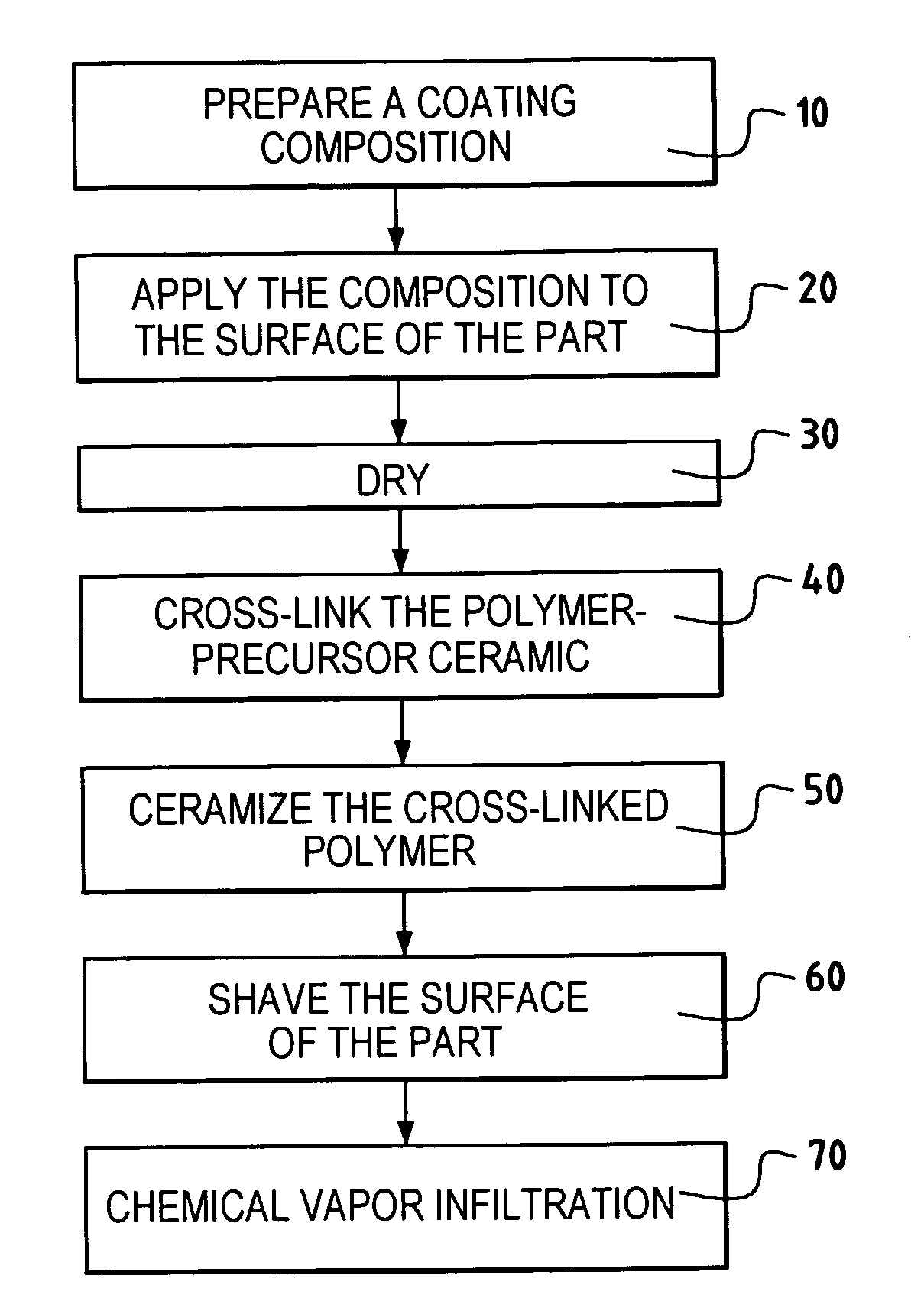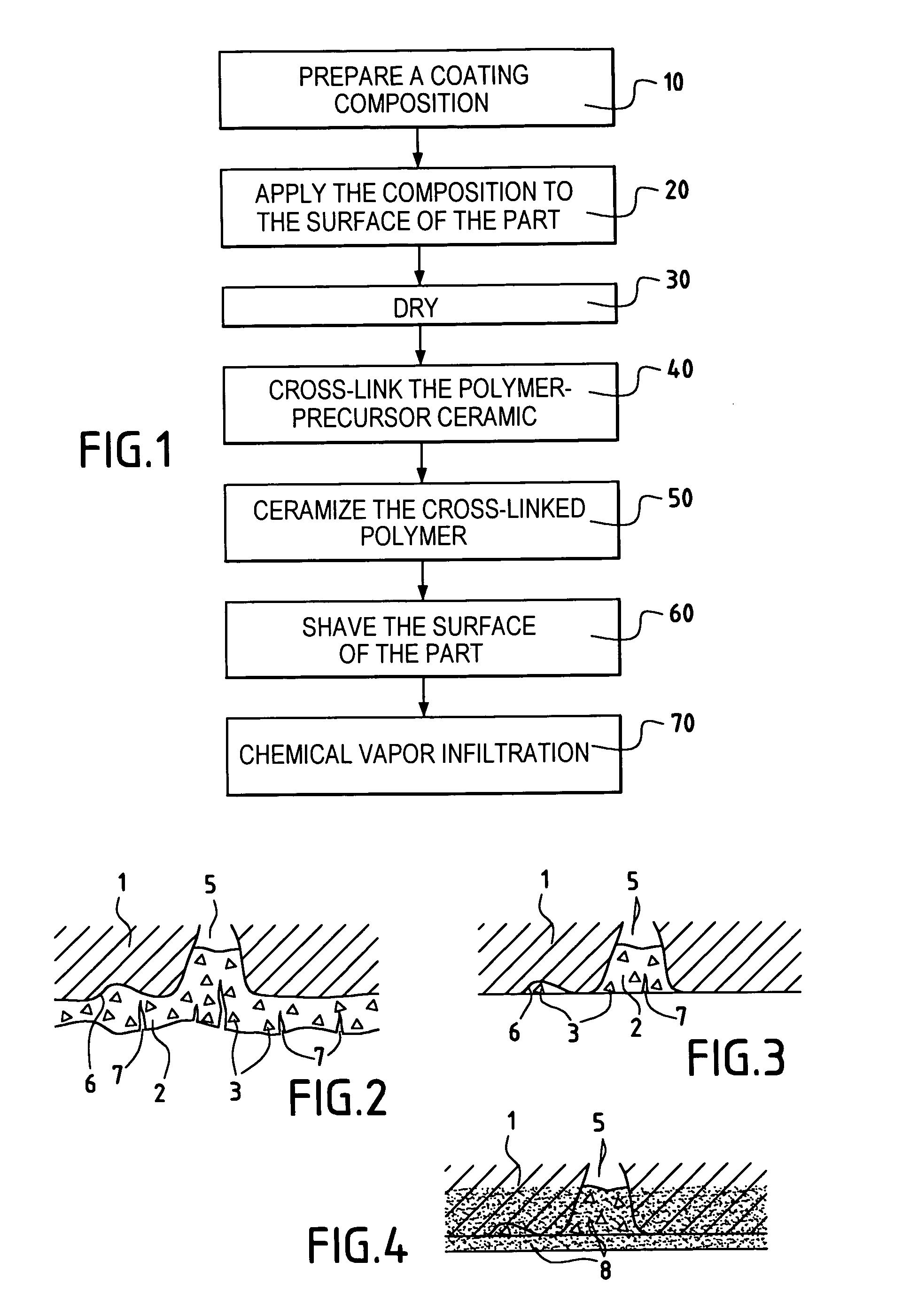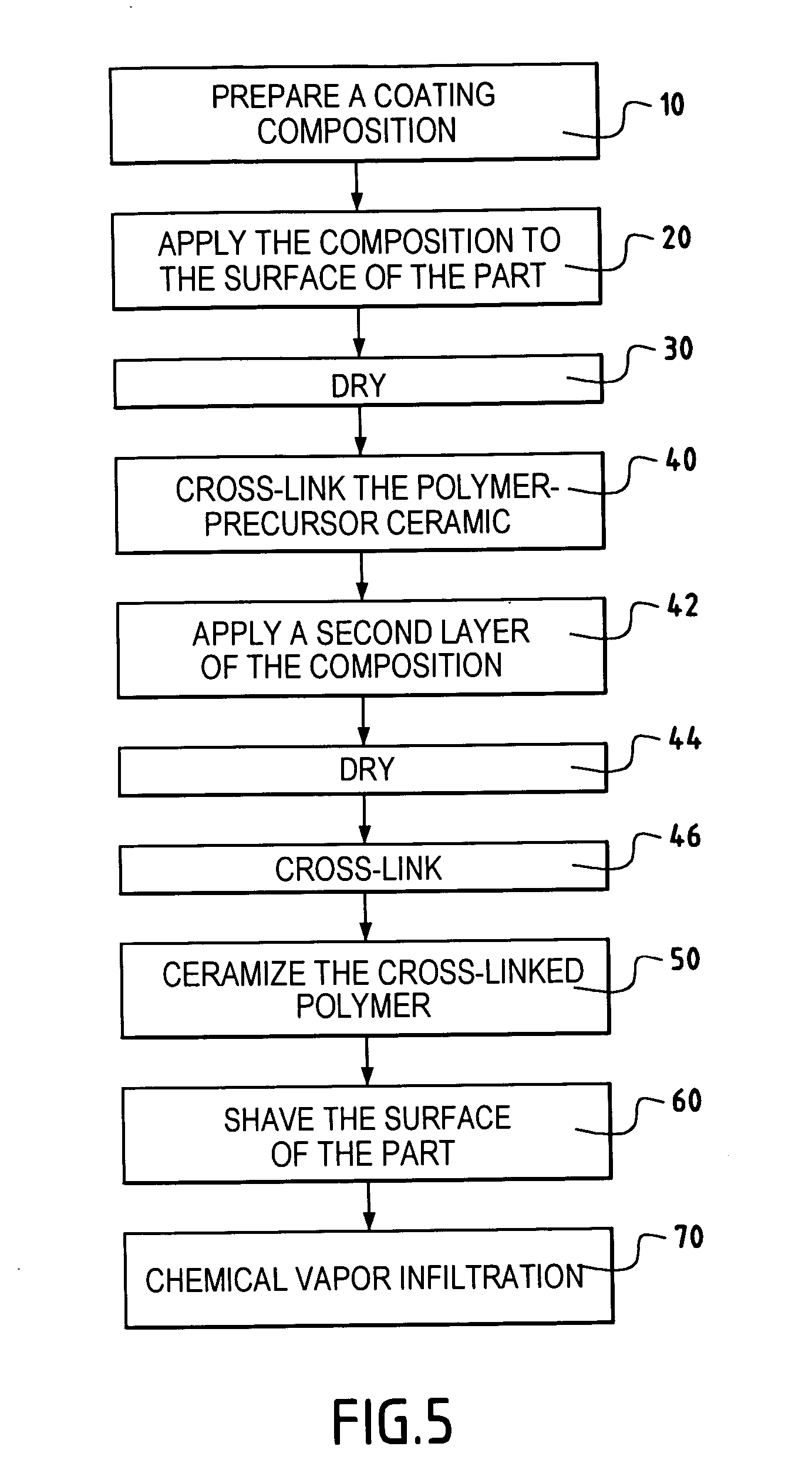Method for treating the surface of a part made of a heat-structured composite material and use thereof in brazing parts made of a heat-structured composite material
a composite material and surface treatment technology, applied in the direction of metallic material coating process, chemical vapor deposition coating, coating, etc., can solve the problem of varying the amount of extra thickness relative to the initial size of the composite material part, and achieve the effect of satisfying the requirements of dimensional precision
- Summary
- Abstract
- Description
- Claims
- Application Information
AI Technical Summary
Benefits of technology
Problems solved by technology
Method used
Image
Examples
examples
[0097] Two layers of a composition comprising polycarbosilane (PCS) diluted in xylene and having a solid filler in the form of ceramic powders were applied to one of the surfaces of samples of a C / SiC thermostructural composite material, and the powder composition was varied as set out in the table below. On each occasion, after the first layer had been applied, it was dried in air to eliminate the xylene and the PCS was cross-linked by raising its temperature up to about 350° C., and after the second layer had been applied, the same drying and cross-linking steps were performed followed by a step of ceramizing all of the cross-linked PCS by raisin the temperature up to about 900° C.
[0098] On each occasion, the ratio by weight of PCS and xylene was equal to about ⅔, while the ratio by weight of solid filler to PCS was equal to about 1.
TABLEPowders usedWeight ratioPowder 1Powder 2Powder 1 / Sample(mean grain size)(mean grain size)powder 21SiC (37 μm)SiC (9 μm)2.32SiC (37 μm)HfB2 (35...
PUM
| Property | Measurement | Unit |
|---|---|---|
| grain size | aaaaa | aaaaa |
| grain size | aaaaa | aaaaa |
| mean grain size | aaaaa | aaaaa |
Abstract
Description
Claims
Application Information
 Login to View More
Login to View More - R&D
- Intellectual Property
- Life Sciences
- Materials
- Tech Scout
- Unparalleled Data Quality
- Higher Quality Content
- 60% Fewer Hallucinations
Browse by: Latest US Patents, China's latest patents, Technical Efficacy Thesaurus, Application Domain, Technology Topic, Popular Technical Reports.
© 2025 PatSnap. All rights reserved.Legal|Privacy policy|Modern Slavery Act Transparency Statement|Sitemap|About US| Contact US: help@patsnap.com



